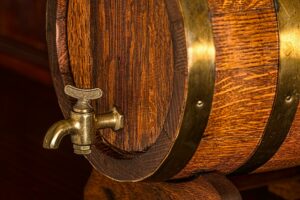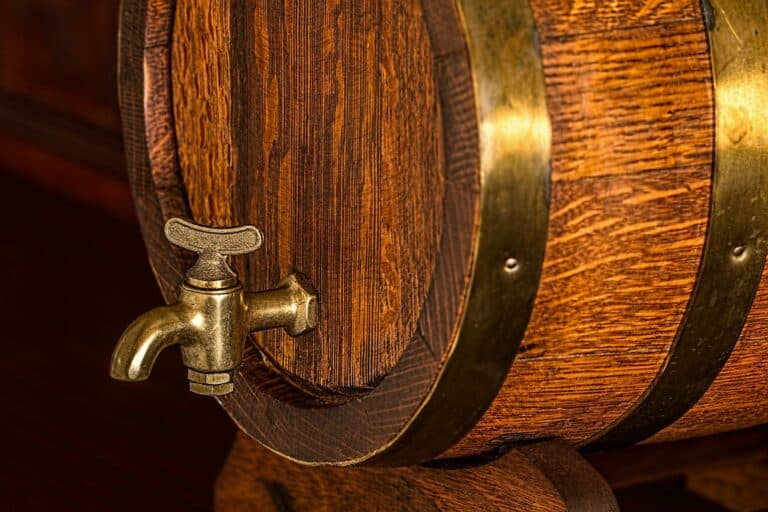What is cask conditioning?

Why do the British like their beer warm and flat?
You might have heard the rumor that beer drinkers from the United Kingdom prefer their beer “warm and flat”. Compared to America, where advertisements of ice cold bubbly beer have convinced us that anything else is wrong, this notion can be quite disturbing. The truth is the British don’t drink warm flat beer at all. It’s just carbonated and served in a different way, and is a nod to tradition and history.
How is beer carbonated?
Most commercial breweries around the world use artificial carbonation to get bubbles into their beer. Once beer is done fermenting, it is mostly flat. The flat beer is then put into a big tank called a brite tank and CO2 is pumped in at a controlled pressure to reach the desired carbonation level.
This method is quick, efficient and precise, but obviously also fairly new technology in beer’s 13,000 year history. How did they do it in the old days?
Was beer carbonated in the old days?
In the old days, brewers didn’t have pressurized CO2 tanks and a means to force carbonate their beer. So, did beer in the old days have bubbles? Yes!
Brewers knew that if they put their freshly fermented beer into a barrel or bottle and added the precise amount of sugar before sealing the container, a new fermentation would happen inside the vessel. Yeast still present in the beer would find the new sugar, consume it and produce alcohol and carbon dioxide. This carbon dioxide would have nowhere to go, and the beer would become carbonated.

What is Cask Conditioning?
Cask conditioning relies on this ancient method of carbonation and is the traditional way beer is served in pubs throughout the UK. To make a cask conditioned beer, the brewer will put flat beer into the serving cask. In the old days, these were mostly wood, but now are typically stainless steel or plastic.
The brewer will add a measured amount of sugar solution to the cask and seal it up. The cask is then shipped to the pub where it will sit in the cellar for a couple of weeks. During this time, yeast will consume the new sugar that was added and produce alcohol and carbon dioxide. A person known as a cellar man (could also be a cellar woman) will keep an eye on the cask and when it is ready for service they will tap it.
The cask can be brought up to the bar and served from a faucet directly in the barrel, or a hose can be run from the cellar up to a hand pump on the bar. The barkeep will pump the beer from the cask below into the pub goers’ glasses.
Since the beer isn’t artificially carbonated and isn’t served with CO2 pressure from a keg, it will have lower carbonation that what US beer drinkers are used to, though it is certainly not “flat”. Since the cask is kept in the cellar instead of a refrigerator, it will not be as cold, though to say it is “warm” is not accurate either. Most cask beer is a cool 55 degrees Fahrenheit.
Where is there cask conditioned beer in Asheville?
Cask conditioned beer can be hard to come by. It’s a labor of love for the brewery, as it is not nearly as efficient as force carbonation. Casks need to be consumed quickly, as they tend to go stale rather quickly. But, if you know where to look you can find some cask conditioned beer in Asheville.
One place to start is at Dirty Jack’s. Dirty Jack’s is Green Man Brewery’s original taproom, and they often have a cask of either ESB or Porter available for guests to enjoy. Dirty Jack’s is also a stop on our brewery tour in Asheville, so if you’d like to enjoy some cask conditioned beer with us, please ask. We’d be happy to share this part of beer history with our brewery tour guests!

